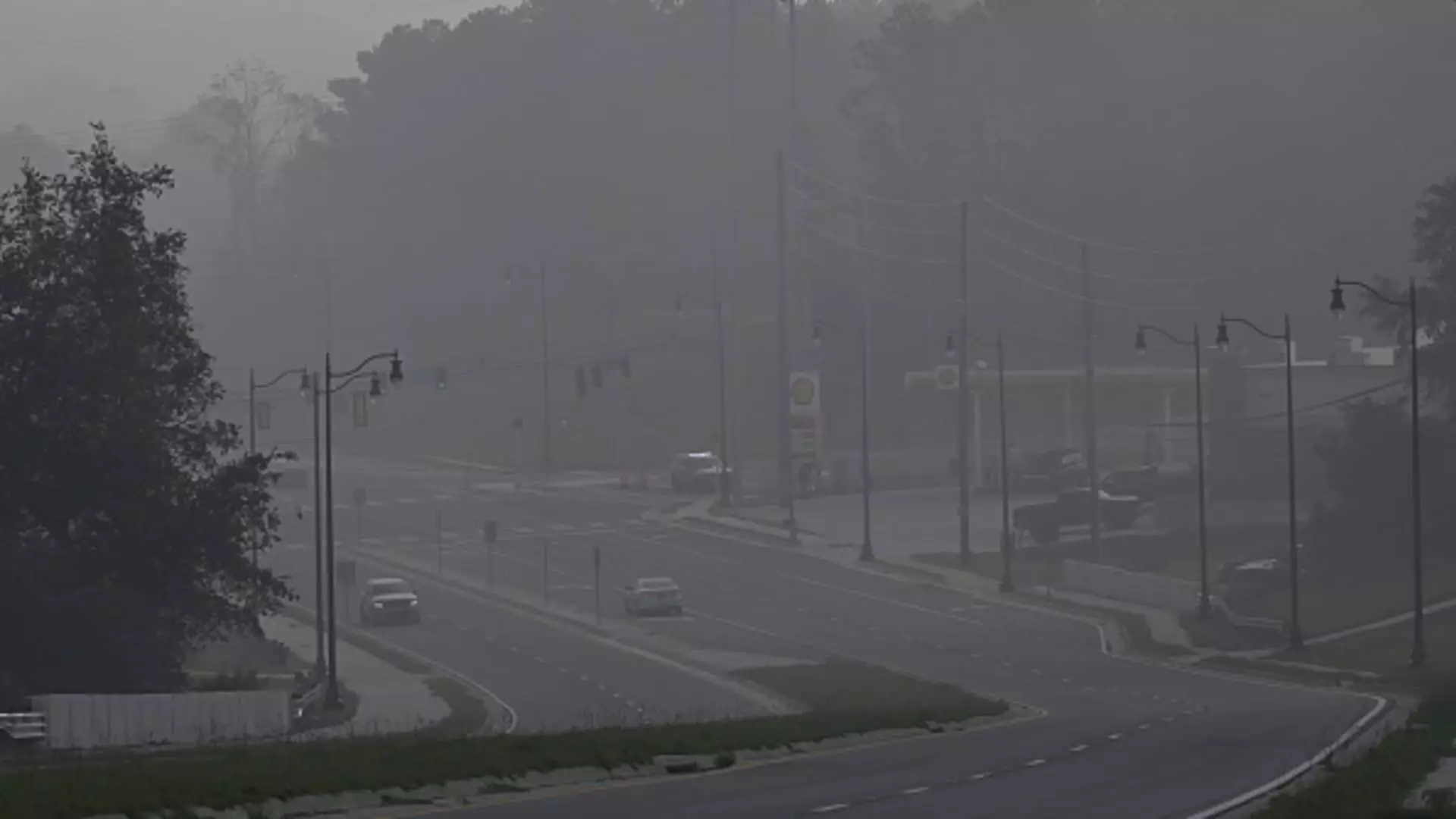On a seemingly ordinary Sunday morning, a chemical lab fire erupted at a BioLab facility in Conyers, Georgia, igniting concerns that would ripple throughout the nearby metro Atlanta area. As authorities scrambled to manage the situation, elevated levels of chlorine were detected in the air, prompting a cascade of reactions from both officials and residents. This incident raises critical questions about industrial safety, the effectiveness of emergency response systems, and the complex relationship between communities and chemical production facilities.
The fire at BioLab was reported early Sunday at around 5 a.m. and was quickly extinguished. However, the repercussions from that incident began to unfold almost immediately. The Georgia Emergency Management and Homeland Security Agency issued an alert detailing the hazardous air quality resulting from chlorine emissions, which are known to cause significant health risks. The agency recommended a shelter-in-place order for Conyers’ 93,570 residents, alongside evacuation orders for those living in close proximity to the plant. This reflects a substantial disruption to the daily lives of residents in a community that now found itself embroiled in a health crisis.
Chlorine, primarily used in water treatment and chemical manufacturing, is a potent irritant that can lead to respiratory difficulties and other severe health issues, particularly among vulnerable populations such as those with pre-existing lung or heart conditions. Symptoms of chlorine exposure can include chest pain, shortness of breath, and general fatigue—issues that local residents began reporting shortly after the incident. This dramatic rise in health complaints illustrates the tangible impact of industrial accidents not just on air quality, but also on the well-being of the community at large.
At the same time, further complicating the response to this adverse event, weather predictions indicated a shift in winds that would soon carry the chlorine-laced smoke toward Atlanta, about 30 miles west of Conyers. Meteorological factors are critical in understanding how chemical emissions spread, affecting risk levels throughout larger areas. Therefore, local officials had to contend not only with the immediate threat but also with the longer-lasting implications of air pollution.
Social media platforms became a sounding board for frustrated residents. From complaints about the suffocating haze and the acrid smell of chlorine to concerns over conflicting information from authorities on the safety of the air quality, it was clear that the community felt anxious and confused. This highlights an essential aspect of public relations in emergency management: transparency and clear communication are paramount in fostering trust between officials and the populace.
Thomas Chastain, an employee in proximity to BioLab, noted that the communication surrounding the safety status shifted inconsistently. Such ambiguity not only heightens community anxiety but can also lead to feelings of helplessness and erosion of trust in governmental authorities. Residents voiced sentiments about seeking action against the facility, reflecting a broader trend of community advocacy targeting industrial plants perceived as high-risk.
While state and federal agencies assured citizens that chlorine levels had returned to “safe” thresholds, the psychological and physical toll on those affected remained palpable. As cautionary measures were outlined, including the recommendation for residents to limit their exposure, discussions around the viability of chemical plants like BioLab in residential areas gained momentum. Protecting community health must take precedence over industrial expansion, and this would likely require a reevaluation of zoning laws and stricter oversight on chemical facilities.
In the wake of this incident, it would be prudent for both regulatory bodies and community leaders to engage in dialogue around safety protocols and emergency preparedness. Community trust cannot be built merely on reactive measures; rather, proactive strategies and stringent regulations must be implemented to safeguard against future incidents.
The fire at BioLab serves as a stark reminder of the potential hazards that industrial facilities can pose to nearby communities. As residents continue to express their concerns and demand accountability, it becomes increasingly clear that integrated safety measures, effective communication, and community involvement are essential in ensuring that such incidents do not become the norm. Balancing the needs of industry with the health and safety of communities necessitates a collaborative effort from all stakeholders involved.

Leave a Reply